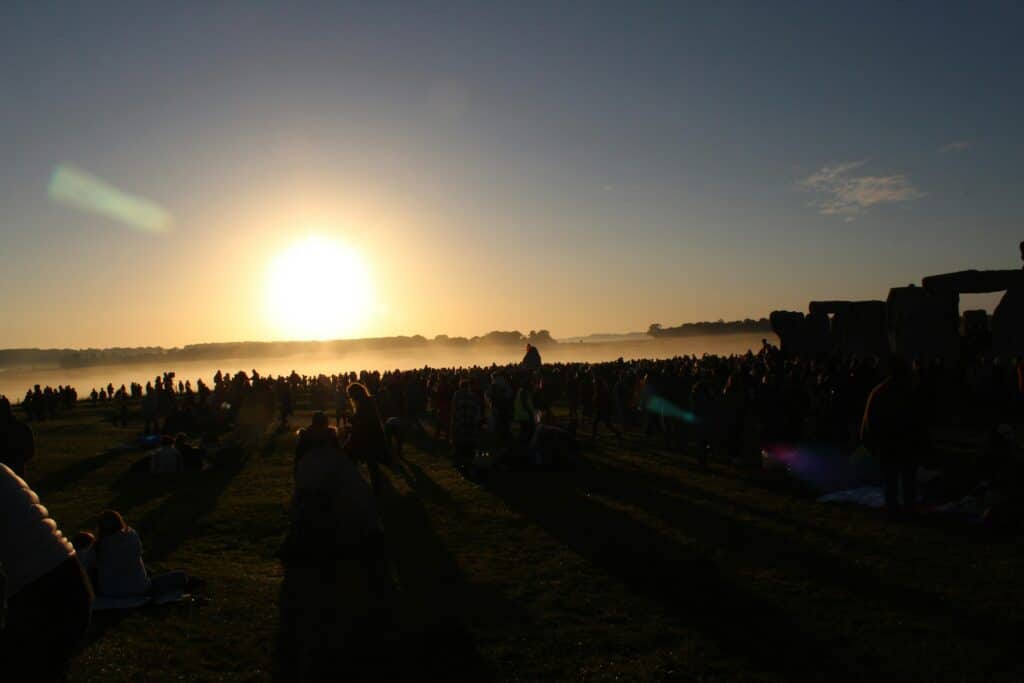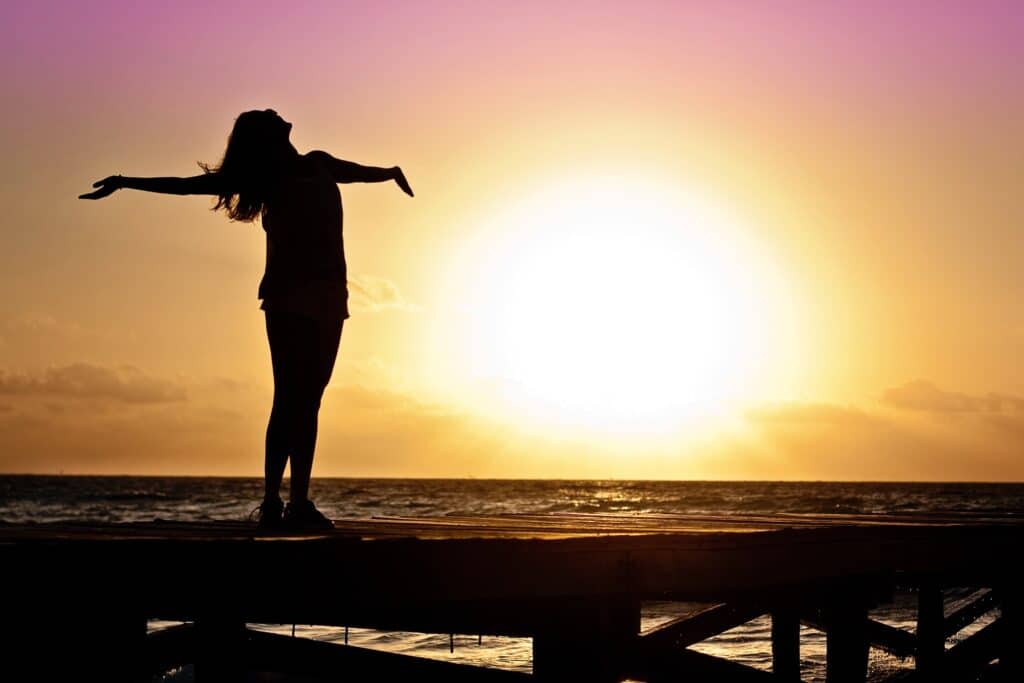
Winter solstice, the longest night of the year, has been celebrated globally as the Sun’s “return” since ancient times. Its calendar date, December 21st or 22nd in the northern hemisphere and June 20th or 21st in the southern hemisphere, influenced the holidays we celebrate today, such as Christmas and Hanukkah. Our team here at Remitly created this guide about celebrating the year’s longest night and the shortest day and some worldwide winter solstice celebrations.
In many traditions, the winter solstice date commemorates the exact moment when half of Earth is tilted farthest away from the sun, promising longer daylight. Many cultures celebrate big festivals around this time since it’s a time of renewal and celebration. Let’s take a peek at what different winter solstice festivities look like around the world.
Scandinavia: Yule
In Scandinavia, Yuletide (Yule) is the pagan name for Christmas. This significant winter day originated as a pagan holiday held after the midwinter solstice (typically December 21) to celebrate the sun’s return and longer days. The 12-day Christmas celebrations included drinking and eating slain animals.
Speaking of animals, the Yule goat (The Jul Bok) is usually made from straw or is sometimes a man dressed up as a goat. He would appear before Yule to ensure proper holiday preparations and became a gift-giver with Jultomten (Santa Claus).
The Feast of Juul involved lighting fires to symbolize the heat and light of the returning sun. It involved the Yule log—lighting a fire before medieval times. A giant log was decorated, hoisted into the room, and fed a fire over the 12 days of Christmas’ longest nights, bringing luck for the year.
Today, Church services are often part of Christmas celebrations, followed by a traditional family supper with a buffet (smörgåsbord) of ham, pork, or fish and sweets. After Christmas Eve supper, someone dresses as Tomte, a mythological creature from Nordic folklore. Bonfires are lit as a representation of the Yule log and Feast of Juul celebration.
Making gingerbread houses, walking through towns adorned in lights, and creating a feeling of Hygge, which is a sense of “winter cozy,” are all ways a Scandinavian winter solstice Yule is observed.
China: Dongzhi Festival
The Dongzhi Festival is an important winter solstice celebration in China, translated to “winter’s extreme,” and recognizing the incoming positive energy following the solstice. Inspired by the yin and yang philosophy of balance and harmony—the longer days following the solstice mean an increase in positive energy.
Among many traditional Asian foods, Tangyuan is a popular Chinese holiday dessert. Family gatherings and Dongzhi Festival celebrations must include this glutinous rice flour-filled delicacy with a sweet, semi-runny filling that is believed to warm your insides.
Imperial Chinese families would sweep and maintain their ancestors’ graves to remember their roots. The Dongzhi Festival is still a time to bond with family, reestablish harmony, and eat a big dinner, even though it looks different today.
United Kingdom: Stonehenge and Druid Celebrations
Stonehenge was carefully designed to align with the sun’s movements on the solstices. On the summer solstice, the sun rises behind the Heel Stone in the northeast and illuminates Stonehenge. The winter solstice sun sets southwest of the stone circle, both serving as breathtaking views.
Druids, modern spiritualists affiliated with the old Celtic religious order, will perform morning rites at Stonehenge in white robes to commemorate the solstice. Its focal point is the cycle of life, death, and rebirth.
Druidry is a spiritual or religious movement that conserves the environment by honoring nature. Diverse nature lovers, Druids respect rites and ceremonies and believe in many gods and goddesses. Today’s Druid celebration involves prayer, food, and wine.

Iran: Yalda Night
Iranian winter solstice ceremonial Yalda occurs when fall finishes and the longest night arrives. Iranians commemorate the last night of fall as the sun’s rebirth and the triumph of light over darkness as winter days lengthen and nights shorten. Yalda Night celebrates long, dark nights on winter’s first day.
Since ancient times, Iranians worldwide have celebrated Shab-e Yalda, the longest and darkest night of the year, in connection with Zoroastrianism. The Islamic takeover of Iran destroyed Shab-e Yalda’s religious significance, although staying up late with friends and family has remained.
The life of a Persian is deeply rooted in poetry, and that is no different in their winter solstice celebrations. The poems read on this night will set the tone for the rest of the year. On the night of Yalda, the family’s oldest member recites from “Diwan e Hafez” (“Diwan of Hafez”) to Sufi music, creating a spiritual atmosphere.
If you’re wondering how to celebrate the winter solstice—poetry, pomegranates, and religious ceremonies are central to the night. Eating a bowl of beautiful ruby pomegranate arils on this Yalda is a must, as pomegranates represent the rebirth and renewal of life.
Native American Traditions
Native American cultures often hold religious or community events around the winter solstice. Indigenous peoples have given the winter solstice spiritual significance by honoring ancient sun gods and passing on elaborate tales and rituals to the next generations. They used architecture to understand how the solar system works and passed that knowledge down through generations.
Native American winter solstice celebrations vary by tribe. For example, the Zuni people of the American Southwest have a tradition called Shalako. During this ceremony, six Shalako messengers, depicted as giant, beaked spirit deities, carry out prayers. These messengers accompany the portrayed Council of the Gods and participate in dances, prayers, and ritual blessings for health and fertility that last all night.
Peru: Inti Raymi
The Inca Pachacutec founded the Inti Raymi in 1430 AD and celebrated it every winter solstice in the southern hemisphere when the Sun was farthest from the Earth.
In Qorikancha, the Inca capital’s ancient holy center, dancing and chanting honor Inti, which starts the festival. The night before the festival, the Incas’ elite gathered in Huacaypata, the main square, to await Apu Inti. Peasants waited for dawn in silence and reverence, thanking God for a successful harvest as the star rose between the mountains.
Since the Incas were a sun-worshiping culture, solar horizon events were very important to them. Their calendar marked the seasons for planting, harvesting, and religious festivals. Their society revolved around the Sun.
The tradition continues today to recreate Inca rights in a musical, spiritual, ritualistic, and magical theatrical performance. The festival always takes place in Cusco, Peru, and the main celebrations are held in the fortress of Sacsayhuamán just outside of the city. It’s a major tourist attraction today, and visitors are asked to respect the cultural significance of the event.
Japan: Toji and To-ji Temple
In Japan, Tōji, the winter solstice, signifies the transition from autumn to winter and offers a chance to prepare physically and mentally. It is believed that the ‘yin’ of cold and darkness dominate most on the shortest day of the year.
On the solstice, a bath with fresh yuzu, a tiny, bright yellow citrus with a sweet, tart flavor and aromatic oils, is traditional.
And what is winter solstice without some comfort food? Kabocha, a Japanese pumpkin, is a winter solstice favorite. Winter is hard on crops, but kabocha is hardy, and the vitamins are good during the winter for protecting your body from sickness.
It is customary to visit the To-ji Temple in Kyoto, where visitors walk down a path in the middle of a bonfire to a shrine where they pray for soul cleansing and family health for the following year.

Eastern Europe: Koleda and Koliada
Pre-Christian Slavics celebrated the winter solstice with Koleda or Koliada. The spiritual-mortal divide was weakest in winter, according to ancient Slavs.
Koleda blessed local households and fended off evil spirits to brighten this dark season and prepare for next year. Candles and bonfires before Koleda inspired the ancient Slavs during the cold winter to welcome spring.
Koledari, a group of young people in homemade costumes and alien masks, sang carols for each residence. This clothing symbolized their ancestors and kept devils out of mortal existence. Carols washed and blessed the house, and the owner offered Koledari sweets and money.
After the Slavs converted to Christianity, Koleda became part of the Christmas celebration. Typical Slavic traditions are still ways to celebrate today, such as burning an oak branch on Christmas Eve, singing carols, and transforming the Polaznik (the first guest to come to a house at Christmas) into St. Nicholas.
United States: Pueblo Bonito and the Sun Dagger
The largest and most famous great house in Chaco Culture National Historical Park, northern New Mexico, is Pueblo Bonito. Pueblo Bonito is Chaco Canyon’s most studied and famous cultural monument.
On the solstices and equinoxes, a ‘sun dagger’ shaft of sunlight illuminates a pictograph at Chaco Canyon, New Mexico. Two light daggers frame the huge spiral during the winter solstice, making winter solstice art.
The Sun Dagger was sacred to the people of Chaco Canyon, who would make regular pilgrimages to the site. It also shows the significant role that astronomy played in the ancient Chacoan religion and society.
Unfortunately, you can no longer see the Sun Dagger today. In 1989, the rock slabs shifted, presumably owing to overtourism, ruining the image. The site is closed today.
The universal message of winter solstice
Worldwide, tribes have celebrated the winter solstice for ages. Some use this as a countdown to Christmas, while some illuminate the night with torches, candles, and music. Others celebrate the end of darkness and the start of the new year, when days will get longer.
Regardless of how or where the winter solstice is recognized, the common theme of rebirth, light, and celebration is the universal thread that weaves through all cultural observances. No matter how you honor the season, use Remitly’s app to send money to friends and family and stay connected.

